CRAWFORD COUNTY - For those who enjoy the fishing on Tainter Creek in Star Valley, things have gotten a little bit better with the recently completed stream bank restoration project on the Rayner property.
The project in Star Valley was overseen by Paul Krahn of the Trout Unlimited Driftless Area Restoration Effort (TUDARE), and was completed in August.
“Ernie Rayner decided that he wanted to leave his land better than he found it for the next generation,” TUDARE’s Duke Welter said. “After talking with neighbor Bruce Ristow, Ernie sold a permanent easement for fishing to the DNR, and from there we were able to work with public and private funding sources to secure the $140,000 needed to complete the project.”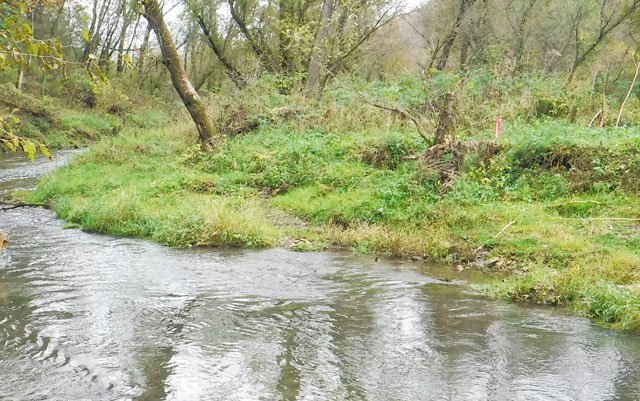
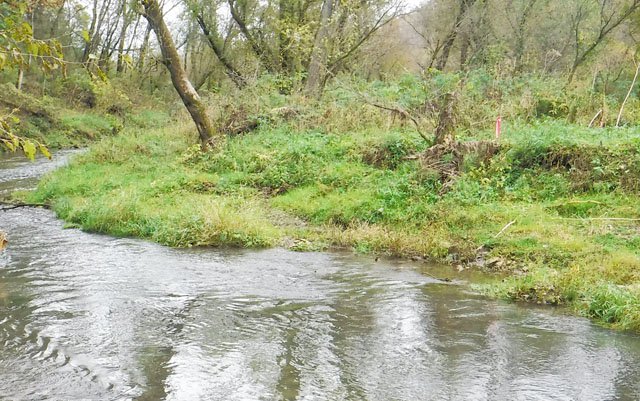
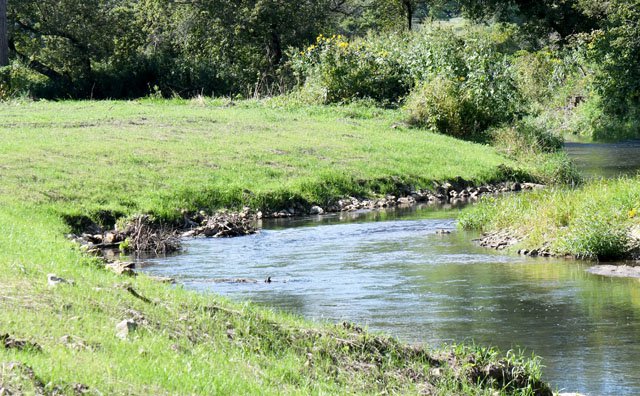

In 2020, the group plans restoration on a connected section of Conway Creek, from its confluence with Tainter Creek up to the bridge across County B. This project will cost an additional $60,000, and is already fully funded.
“The areas of the creek that are suitable for restoration work are those where the banks are in the optimal three-to-eleven-foot range,” Welter said. “This means that the middle part of the stream from about where it crosses County B north of Towerville to about Bruce Ristow’s farm is the area that we are hoping to do restoration projects in, and we have had other landowners express interest.”
Welter explained that in the upper portions of the Tainter Creek Watershed, the gradients on the tributary streams are so steep that it is unlikely that restoration efforts would hold up in the face of large rain events and runoff. In the lower part of the watershed, below Ristow’s farm, the creek banks are so high that it would not be cost effective to remove the volume of sedimentation and sculpt the banks.
“TUDARE is interested in restoration efforts along Tainter Creek because, like other major tributaries of the Kickapoo River, it provides good conditions for a healthy trout fishery,” Welter said. “The water, from spring-fed sources, is always cold with a steady, high flow, and the limestone and sandstone bedrock that the water is filtered through provides nutrients that create fertile conditions for water plants, insects and crustaceans that trout rely on for food.”
Welter explained that the headwaters of Tainter Creek are largely protected by the land use in the area. He explained that the upper portions are mostly wooded hillsides, and there is not a lot of row crop plantings above most of the tributaries, which reduces runoff of water and nutrients. He emphasized that the existence of a group of conservation-minded farmers like the Tainter Creek Watershed Council is also a big plus.
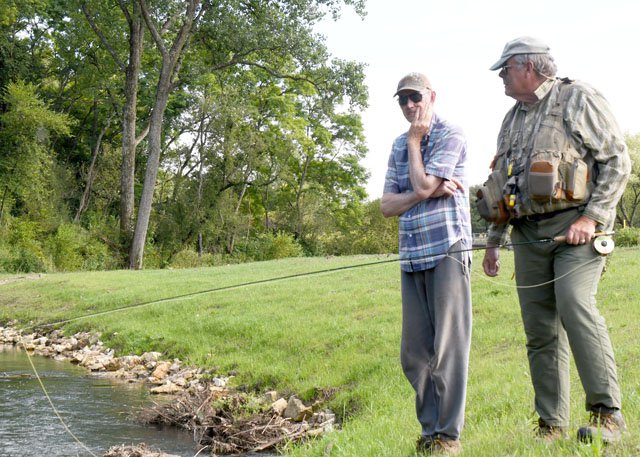
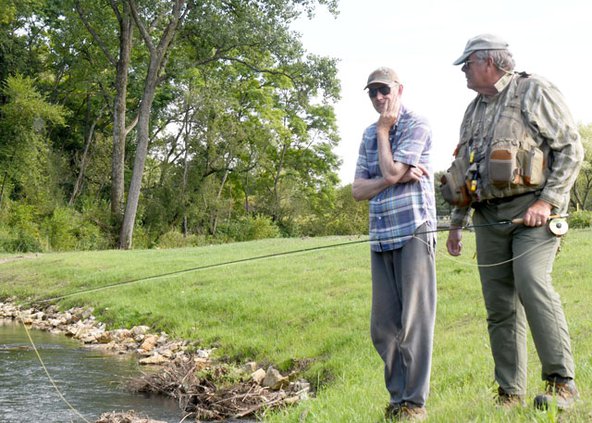
“Bruce Ristow’s management of his lands and his restoration efforts provides a great example to other landowners in the watershed,” Welter said. “Bruce has been instrumental in our outreach efforts, and this project literally would not have been possible without him.”
Unlike other organizations dedicated to conservation, TUDARE is focused on restoration efforts on working agricultural lands. Their efforts rely on forging good partnerships with local landowners, and they have undertaken a total of 350 projects in the Driftless Region.
“We’ve had some successes and some failures over our many years of working in the Driftless Region, and learned from them all,” Welter said with a smile. “The addition of Jeff Hastings and Paul Krahn to our staff is a tremendous asset to our work. Both are former Vernon County Conservationists with years of experience in restoration and working with local landowners.”
The project
According to TUDARE Project Manager Paul Krahn, from the time it was surveyed and designed until project construction, a time of two years, the stream did change in section after a major flood event.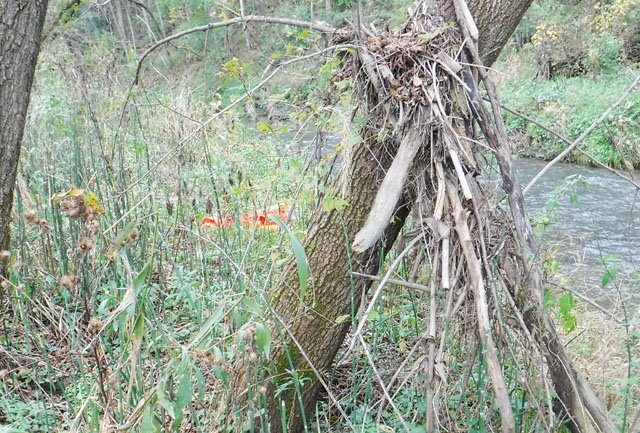

“This changed the area significantly, and the design plan needed to be altered to adjust for these changes,” Krahn explained. “A DNR permit modification had to submitted, and they came through with the permit modification approval in a timely manner.”
Work on the project on Tainter Creek this summer started in April and May, with the clearing of the softwoods out of the corridor with heavy equipment. Towering Cottonwood trees and Willows were left standing because of their deep root structures, while shallow-rooted Box Elders were removed.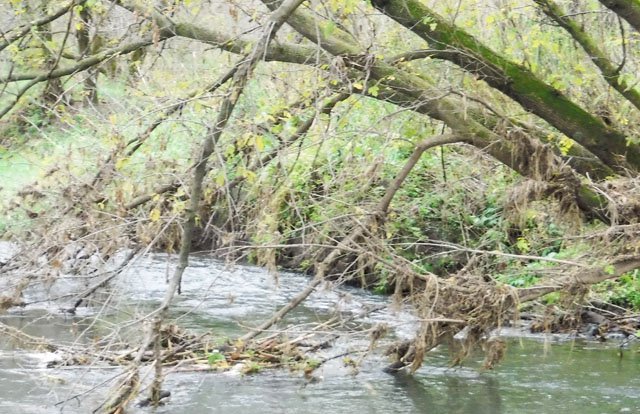
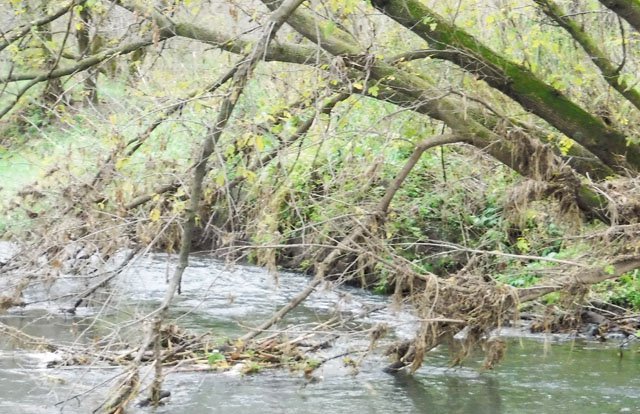
“Tragically, shortly after the project started, Ernie Rayner passed away and did not see his vision realized,” Welter noted. “We are tremendously grateful to the Rayner family for making this project possible. Ernie’s vision showed great foresight and commitment to land stewardship, and our group is thinking of installing a bench at the site dedicated in Ernie’s memory.”
After clearing the trees, the process of sculpting back the banks to a 3:1 or 4:1 slope began. What this means is that for every foot of rise off the level of the creek, the banks were sloped back three to four feet. Multiple dump truck loads of sediment were hauled out of the area to accomplish the aims of the project. Local rock was used to reinforce the banks. After sculpting, the banks were seeded into a fast-growing nurse crop as well as perennial and native vegetation that will develop deep roots to hold the stream bank in place.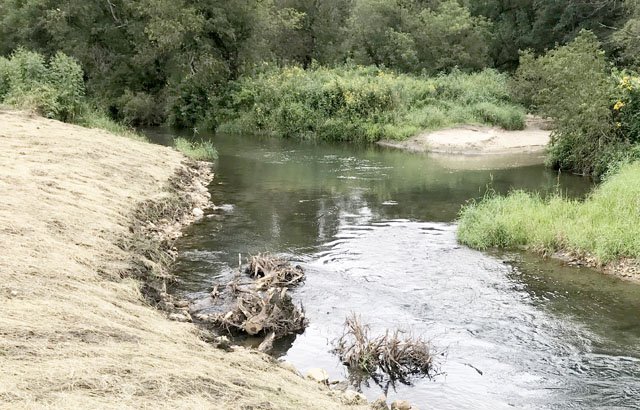

Sculpting back the banks and removing the sedimentation that has built up over decades results in the creek being restored more to what it was like before the area was settled, the hills cleared, and massive soil erosion occurred. Now a fisher can basically just walk right to the edge of the creek versus scrambling down 3 to 11-foot vertical banks.
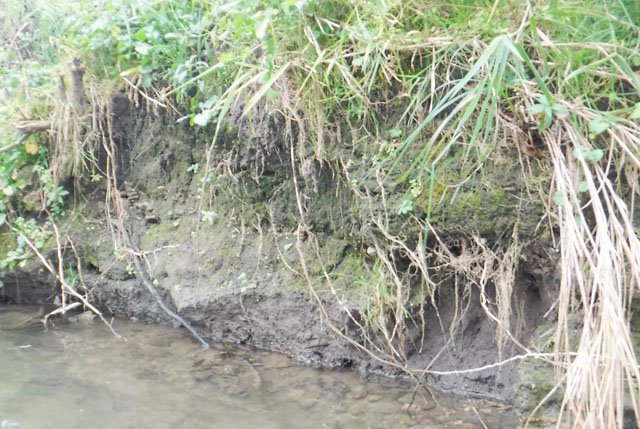
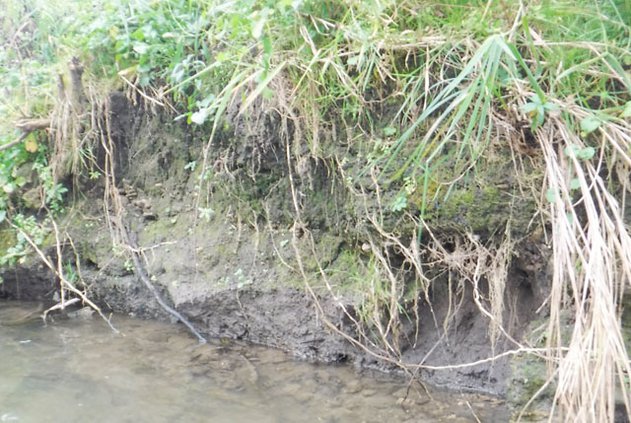
“Over 1,100 cubic yards of soil was removed from the flood plain. The soil removed from the project area is considered post settlement alluvium,” Krahn said. “This is soil that began accumulating when agricultural lands developed after settlement in the mid 1800s. There is a distinct color change in the original soil surface which is very black, and the more recent soil deposition, which is a brown color with more fine sands in its’ composition. Post settlement alluvium thickness varied from two-to-seven feet in this section of stream.”
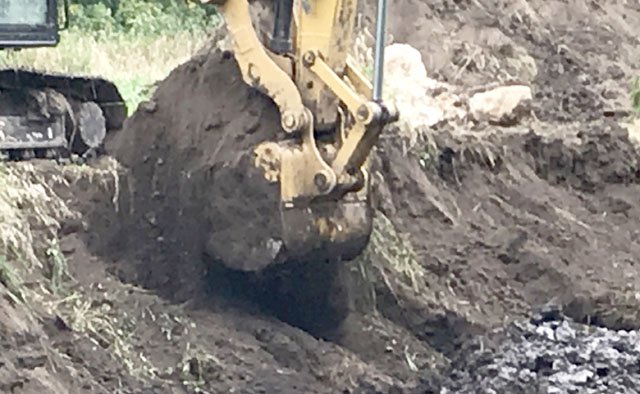
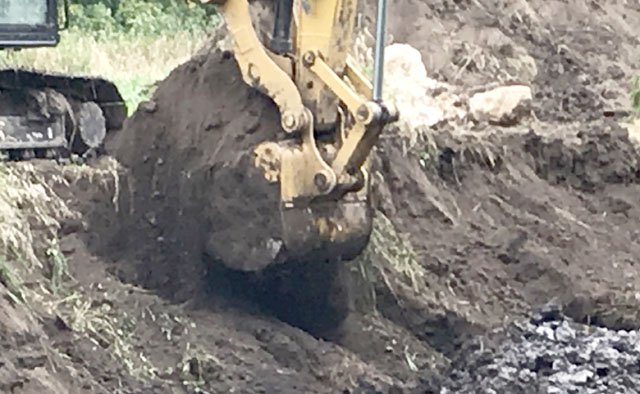
The sculpting also serves to reconnect the creek with its floodplain. Instead of fast-moving and highly destructive floodwaters rushing down a deep, narrow corridor, the waters will be able to spread out into their natural floodplain and slow down. According to Krahn, the estimated soil savings from erosion reduction is 605 tons per year from stabilizing the streambanks.
“Weather is typically a major factor when working in the stream corridors,” Krahn said. “We were very fortunate, and did not get slowed down much by rain on this project.”
The trees that were removed from the streambank corridor were used to create various structures. Some were used to create root balls sticking out into the creek, which serve as habitat for trout.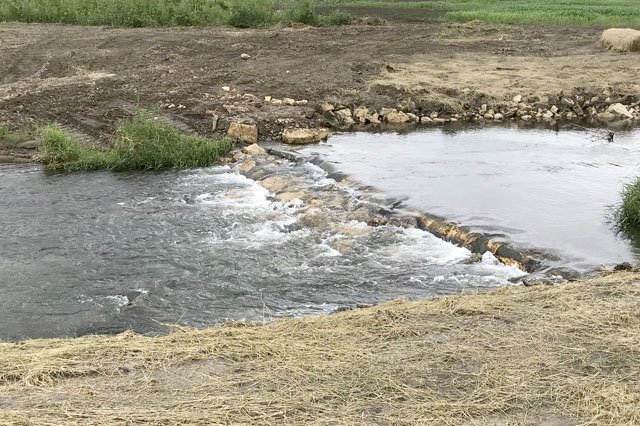
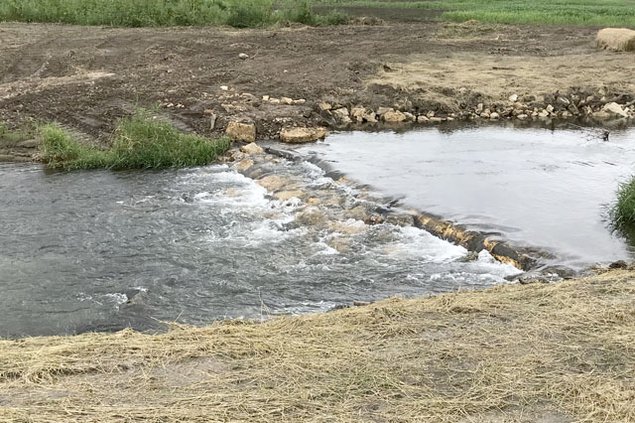
Others were placed across the stream to create weirs, and a plunge pool with deep water where trout can overwinter. Diamond-shaped patterns of boulders from locally sourced stone were placed in the creek to create white water, which aerates the creek and increases oxygen.
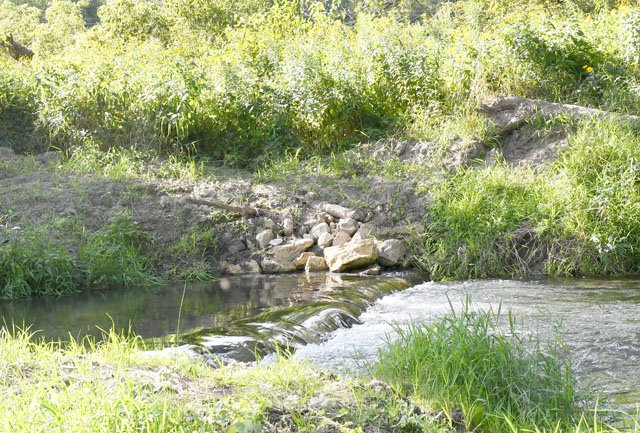

“In this project, we improved 3,320 feet or 0.63 miles of stream,” Krahn said proudly. “For promotion of ish habitat, we installed log deflectors, scattered boulders, cross-channel logs, basking logs and rock weirs.”
Project financing
TUDARE limits their restoration efforts to properties where perpetual easements have been granted in order to ensure longevity of the results against their member’s investments. Once a landowner has granted a perpetual easement, then fundraising from public and private sources becomes possible.
The Tainter Creek project was paid for through public funding from USDA-NRCS, Crawford County Conservation Aids, the FishAmerica Foundation, and the U.S. Fish and Wildlife Service (USFWS). Trout Unlimited members also contributed funding from funds raised from their membership.
“Our partnerships with a variety of conservation organizations, federal, state, county and local allow these projects to be a success,” TU’s Paul Krahn said. “We would not have any projects without landowner’s having a strong conservation ethic and committing to making the watershed healthier by allowing these types of projects be implemented on their land.”
The funding from NRCS came from a $9.3 million dollar grant given to TUDARE for a Regional Conservation Partnership Project. The three-year grant focuses on restoration efforts on working agricultural lands, with priorities of preventing soil erosion and protecting water quality. NRCS grants require cost share, and TUDARE provided that funding.
Crawford County receives funds from the State of Wisconsin for restoration efforts, and those funds are administered through the Crawford County Land Conservation Department. This source supplied a $5,800 grant for the project.
The FishAmerica Foundation is the American Sportfishing Association’s conservation and research foundation. Their mission is to unite the sport fishing industry with conservation groups, government natural resource agencies, corporations and foundations, to invest in sport fish and habitat conservation and research across the country.
Since 1983, the FishAmerica Foundation has awarded $12.1 million to 1,007 projects in all 50 states and Canada to enhance fish populations, restore fishery habitats, improve water quality and advance fishery research to improve sport fishing opportunities and help ensure recreational fishing’s future.
The group provided a $20,000 grant to help make the Tainter Creek project possible.
USFWS has money available for fish habitat partnerships through their National Fish and Wildlife Foundation and the National Marine Fishers Service. The first focuses on inland freshwater streams, and the second focuses on coastal fisheries. Specifically, USFWS' Fishers & Farmers Program awarded the Tainter Creek project a $40,000 grant.



